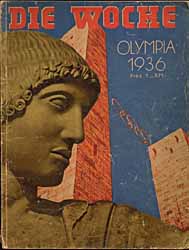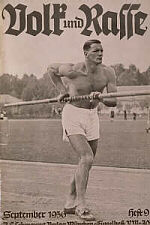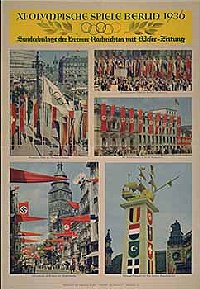
The Olympics were a perfect arena for the Nazi propaganda machine, which was unsurpassed at staging elaborate public spectacles and rallies. Choreographed pageantry, record-breaking athletic feats, and warm German hospitality made the 1936 Olympic Games memorable for athletes and spectators. Behind the facade, however, a ruthless dictatorship persecuted its enemies and rearmed for war to acquire new "living space" for the "Aryan master race."
Photograph #14916


















